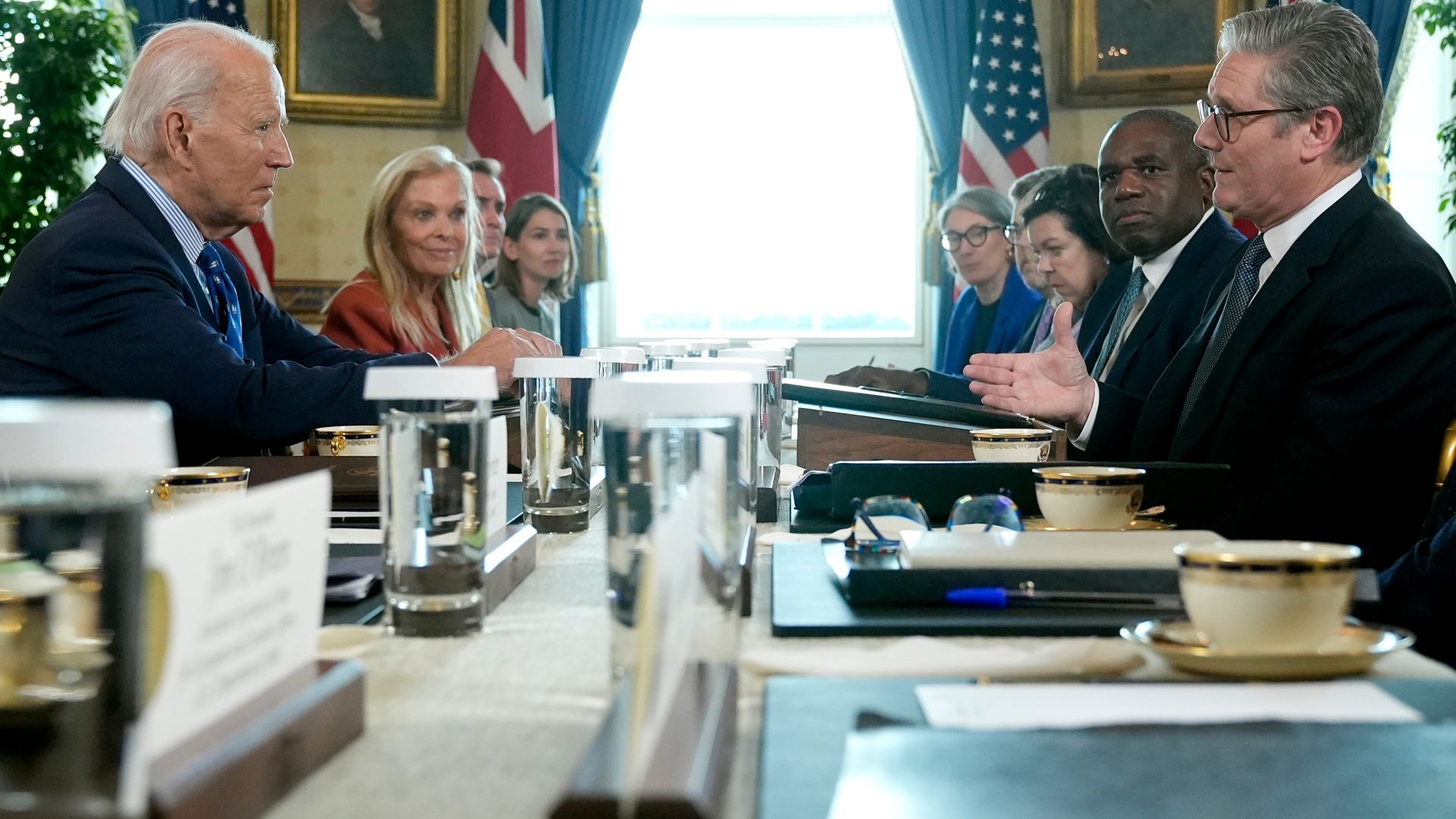Last weekend, the head of the CIA said Western allies should not be intimidated by Vladimir Putin’s threats when making decisions on how best to support Ukraine.
“Putin’s a bully. He’s going to continue to sabre rattle from time to time,” Bill Burns said in a joint appearance in London with his British counterpart, Sir Richard Moore.
“We cannot afford to be intimidated by that sabre rattling … we’ve got to be mindful of it.”
Ukraine war latest: Putin threatens NATO with ‘war’ over long-range missiles
A week later, his advice is already being put to the test after the Russian president warned the US and the UK that they would be going to war with Moscow should permission be given to Ukraine to use long-range British and American missiles against targets inside Russia.
Officials will doubtless have anticipated menacing rhetoric from the Kremlin as it became clear that Sir Keir Starmer and Joe Biden were meeting in Washington to talk about lifting a block on their cruise and ballistic missiles being used inside Russian territory.
However, those involved in the discussions will likely be advising the two leaders that Russia is not looking for a direct confrontation with nuclear-armed NATO allies.
Russia expels six British diplomats from Moscow for ‘spying and sabotage’
Long-range missile approval would put NATO – including UK and US – ‘at war’ with Russia, Putin warns
‘I hope they won’t reach us’ – Russian fears grow over long-range missile strikes
That said, Putin’s warning should not be ignored.
While it is not a reason to balk at signing off on the use by Ukrainian forces of Storm Shadow cruise missiles and American ATACMS – Army Tactical Missile System – ballistic missiles inside Russia, London and Washington will be focused on how else Moscow may respond.
In the past, Russia has retaliated to perceived red lines being crossed by the West in its military support for Ukraine by upping attacks against Ukrainian targets, such as power stations, impacting millions of civilians.
It has stopped short of directly striking inside NATO territory though – a move that could trigger an Article 5 collective response by the allies and an escalation into all-out war.
However, the Kremlin also has a range of unconventional weapons in its arsenal to conduct operations that sit deliberately under the threshold of armed conflict.
Keep up with all the latest news from the UK and around the world by following Sky News
This includes acts of sabotage and arson, cyber attacks, and assassinations.
Mr Burns and Sir Richard used their joint appearance last Saturday to accuse “feral” Russian intelligence officers of waging a “reckless campaign” of malign activity across Europe – and that was before this latest escalation in tensions.
Read more:
Russian ship seen ‘delivering ballistic missiles from Iran’
Analysis: Blinken is verging on the delusional
Be the first to get Breaking News
Install the Sky News app for free
The risk with so-called Russian “grey zone” attacks is if they are deemed by NATO to be sufficiently grave then this too could prompt allies to respond in the same way as they would to a conventional invasion – putting the two sides on another path to full-scale war.
When it comes to military support for Ukraine, no move is without risk – but the UK and its partners understand that retreating from Russian threats and withdrawing assistance to Kyiv would be even more dangerous.






